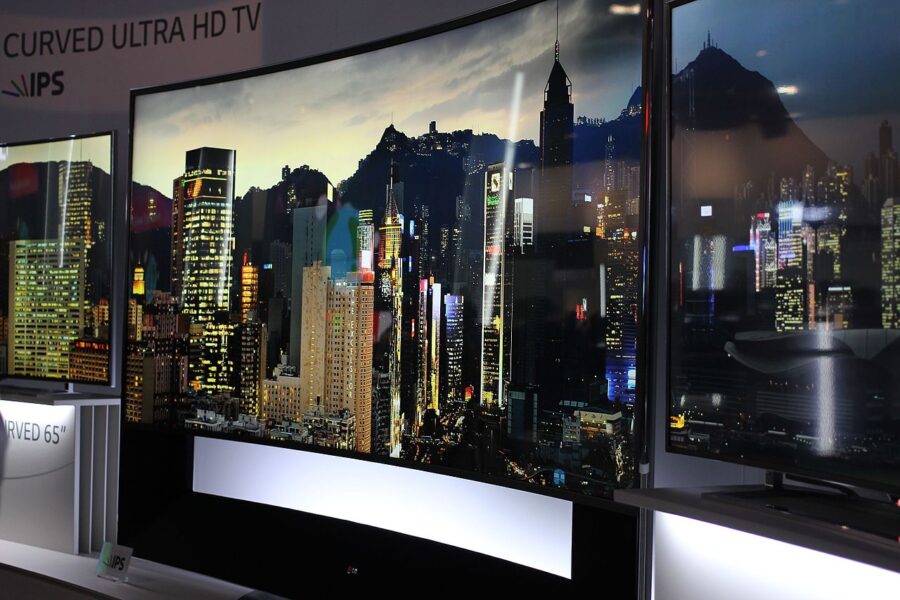Advantages & Disadvantages of OLED Technology
Organic light-emitting diode (OLED) technology offers many advantages over liquid crystal displays (LCDs) with conventional LED backlighting, but that does not make it comprehensively superior and both technologies are capable of impressive performance. An unbiased comparison of LCD and OLED technologies highlights several key areas where each panel architecture could be described as better than the other.
Quantum dot-enhanced (QD) LCDs provide vastly increased peak brightness levels over OLEDs (up to 2,000 nits), while premium OLED televisions are capable of infinite contrast ratios. Current applications of OLED technology primarily exploit the balance of high picture quality at low power consumption in smaller-scale devices. A multitude of comparisons could be made of different display panels from handheld devices (<10”) to large premium TV sets (<80”).
Rather than put together an article that claims either LCD or OLED technology is the best, we will explore the advantages and disadvantages of OLED technology from a market perspective.

Source: Flickr
OLED Technology: Pros and Cons
OLED panels comprise a thin film of sequential organic layers sandwiched between an anode and a cathode. The emissive OLED layer emits light when a current is applied, hence they are often described as self-illuminating. Subsequently, OLED technology requires no backlight to generate images on-screen, unlike LCDs. There are numerous benefits to this novel architecture.
Read More: How Do OLEDs Work?
Removing a backlight from the OLED panel structure firstly makes them thinner and lighter weight than LCDs that are comparable from a performance perspective. Additional weight savings can be made by exploiting polymeric substrates rather than glass, which is typically used in LCD displays. This can provide further savings from a material and cost-perspective as polymeric substrates do not require high-reflective index (RI) treatment to reduce the attenuation of light generated by the panel. However, these monetary savings are largely eclipsed by the high overall manufacturing costs of OLED technology.
When OLED panels first emerged on the display market, their notable cost increase over LCDs was partially ascribed to production immaturity. Almost a decade on from the first commercially-available OLED TVs, manufacturers are yet to tackle several key development challenges that continue to drive the price of end-products. The high cost of thin film deposition and low production volumes are two enduring issues in OLED production.

OLED screens also have the advantage of greater physical flexibility, which puts them at the forefront of display novelties like foldable and even roll-able devices. The real-world benefits of this are yet to be fully realized, with few functional options available on the market today.
Want to learn about how OLED technology is used in display and lighting? Read our article on 4 Current Applications of OLED Devices
Where OLED technology has arguably seen the greatest success is in the widespread integration of small-scale OLED panels into smartphones and handheld consumer devices. This is primarily due to its exceptional compromise between stunning visual quality and energy efficiency. Today, consumers want high-definition content on-demand and on-the-go without draining the battery of their handheld devices. Small OLED panels (i.e. PMOLED and AMOLED) can generate high-quality pictures at low peak brightness levels, thus consuming far less power than competing technologies when rendering the same HD content.
OLED Materials from Avantama
Avantama specializes in the development of functional materials for printed electronics applications. Our unprecedented materials expertise has helped us create a tailor-made, customer-first service that allows you to customize your materials for specific manufacturing processes and end-product properties.
If you would like to learn more about the materials that we offer for OLED technology manufacturing, simply contact a member of the Avantama team today.
[Image License: LG IPS Curved Ultra HD TV]